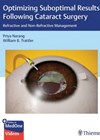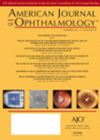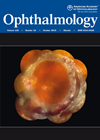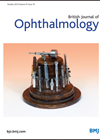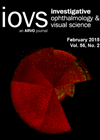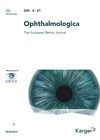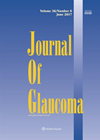You searched for "IOL"
Optimizing Suboptimal Results Following Cataract Surgery: Refractive and Non-Refractive Management
This is a great book with contributions from well-known figures in the world of ophthalmology. It would be a beneficial read for any ophthalmology trainee or consultant as it covers something that is quite essential in ophthalmic surgery – giving...Outcomes of cataract surgery in patients with uveitis
This is a systematic, evidence-based literature review and meta-analysis, looking at the visual outcomes (vision 20/40 or better) of cataract surgery in uveitic eyes. The authors searched MEDLINE, EMBASE, CINHAL and CENTRAL, including English language and human studies only. They...Cataract surgery and circadian photoentrainment
1 December 2015
| Brian Ang
|
EYE - Vitreo-Retinal
The study authors sought to investigate the possible effects of circadian photoentrainment following cataract. This was a randomised clinical trial, where 76 eyes of 76 patients (with bilateral cataract) were randomised to blue-blocking or neutral intraocular lenses (IOLs). Outcome measures...
Mid-term evaluation of the new Glaukos iStent
This is a prospective non-randomised interventional study to assess the efficacy and safety of the Glaukos GTS-400 iStent combined with cataract surgery. The patients enrolled in the study had cataract and primary open angle glaucoma, pseudoexfoliation glaucoma or ocular hypertension....Implantation of intraocular pressure sensor in glaucoma patients
1 April 2015
| Wai Siene Ng
|
EYE - Glaucoma
The authors report safety and accuracy of an intraocular intraocular pressure (IOP) sensor placed in the ciliary sulcus during planned cataract surgery. Six patients underwent implantation of the device; a silicone rubber ring-shaped device encapsulating pressure sensitive capacitors and a...
Cataract surgery in patients with retinitis pigmentosa
Retinitis pigmentosa (RP) is the commonest inherited cause of retinal degeneration. Posterior subcapsular cataract (PSC) develops in 41% to 90% of these patients by age 40 years. In this retrospective study, the authors have evaluated surgical outcomes in patients with...Daybreak Medical: Ophthalmic Ultrasound Seminar 2 Day Course "From Theory to Practice"
30 April 2025
-1 May 2025
Course ProgrammeDay One:-Registration and Welcome-Introduction: applied Basics and Principles-B-Scan: How to Perform and Obtain the Best Images-Standardised A-Scan: Guest Speaker-Biometry: A-Scan, B-Scan and IOL Calculations-Opaque Media/Dense Cataracts-Vitreoretinal Disorders and Trauma-Hands on Training with Real Patients and Biometry Workshop Day Two:-Ultrasound...
EDOF intraocular lens in eyes with preexisting retinal disease
30 May 2025
| Sofia Rokerya
|
EYE - Vitreo-Retinal
Extended depth of focus (EDOF) intraocular lens (IOL) offers improved near and intermediate vision, aiming to reduce spectacle dependence in cataract patients. This study aims to evaluate the performance of EDOF lenses following cataract surgery in patients with retinal pathology....
Moorfields International refractive symposium
24 April 2025
The Moorfields International refractive symposium covers contemporary vision correction surgery to surgeons in the UK and around the world. Taking place on Thursday 24 April at the Royal College of Physicians in London (08:30 - 17:45), the symposium aims to...
Effects of phacoemulsification on IOP and drug use in glaucoma
1 December 2017
| Chrysostomos D Dimitriou
|
EYE - Glaucoma
For patients with comorbid cataract and primary open-angle glaucoma (POAG), guidance is lacking as to whether cataract extraction and traditional filtering surgery should be performed as a staged or combined procedure. Achieving this guidance requires an evidence-based understanding of the...
A missed intraocular telescope – an opportunity to re-focus the evidence
4 February 2021
| Hani Hasan, Jennifer McMahon, Guy Smith
|
EYE - Cornea, EYE - Vitreo-Retinal, EYE - Imaging, EYE - General
Intraocular telescopes allow magnification of the image so that it would be projected into a larger area of the macula, this makes the central defect caused by dry age-related macular degeneration (AMD) smaller. The most common approach is a Galilean...
Braille phones, glaucoma implants and screenshots
1 December 2014
| David Haider
|
EYE - Cataract, EYE - Cornea, EYE - General, EYE - Glaucoma, EYE - Neuro-ophthalmology, EYE - Imaging, EYE - Oculoplastic, EYE - Oncology, EYE - Orbit, EYE - Paediatrics, EYE - Pathology, EYE - Refractive, EYE - Strabismus, EYE - Vitreo-Retinal
Basic phone for Braille readers (or kids and the elderly) We’ve previously covered the extensive features of smartphones that can help the sight impaired. It’s clear, however, that smartphones are not for everyone. One alternative is a custom made Braille...

